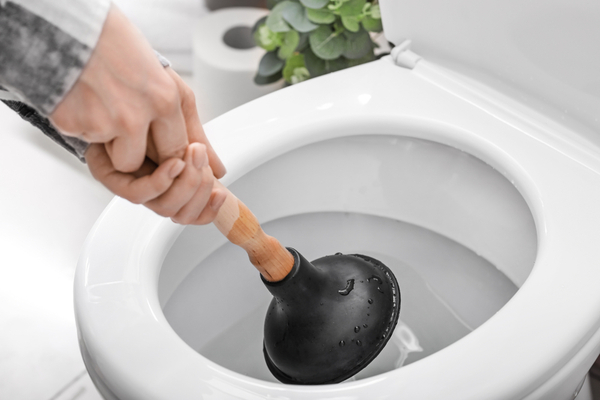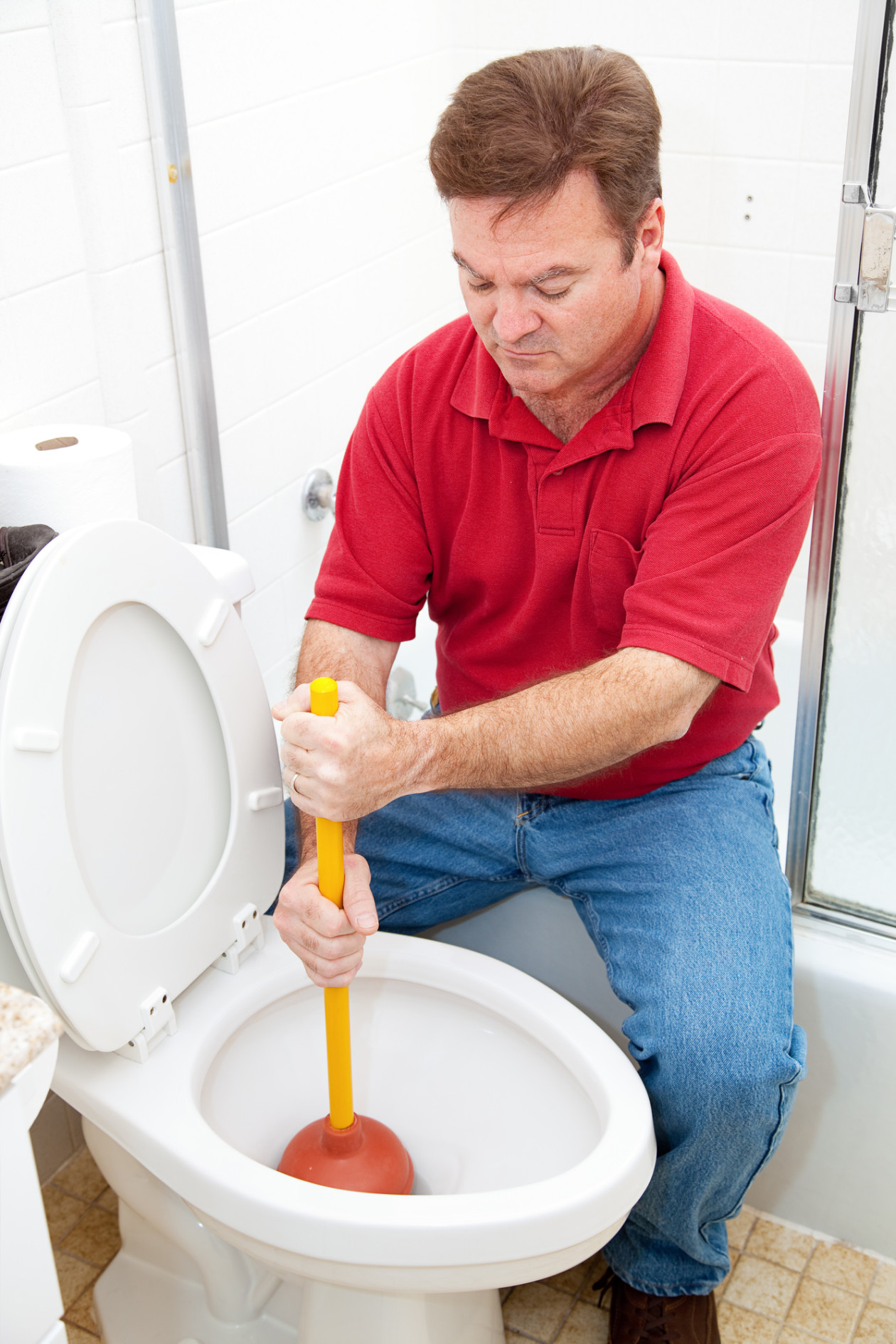A clogged toilet is a problem almost everyone encounters as one of many day-to-day problems in a household. If you are having problems with your clogged toilet, you don’t have to look any further. This article contains all the tips and tricks to unclog a toilet using everyday tools! You just have to get used to the process. Thus along with some practice and a plunger you can fix your toilet. This process is relatively simple and you do not have to spend extra in calling a plumber or flood the toilet while trying to inexpertly fix the situation. Keep reading to know about the tips and processes of how to plunge a toilet efficiently and about the best ways to unclog a toilet.
How To Plunge a Toilet With a Plunger
First and foremost we will need effective tools to plunge a toilet. Keep a plunger or a toilet snake handy. We must make sure that you adjust the plunger or the toilet snake to the size of your toilet. If it is too big or too small then it will hinder the whole process. Thus, you must get a toilet snake or a plunge that is the right size to plunge your toilet.

Secondly, we will be needing rubber gloves. Unclogging a toilet can be a messy process especially for beginners who might not be sure about the process or what they are doing. Hence, gloves are a must. We would advise rubber gloves, but plastic or any other waterproof material will also do.
How To Plunge a Toilet Correctly
First, it is very important to understand why your toilet has a problem with the flush and why it is not being able to flush all the way. A flush that is not working and is unable to exert enough pressure might mean that there is a problem with the toilet drain. More specifically it can mean that the toilet drain is plugged, either partly or all the way. Usually, we also call clogged toilets, “Slow Drainers”. This means that the flush water that is supposed to fill the toilet bowl completely and clean away the waste by rushing out is not being able to do its job properly. Thus, the toilet flush’s water only fills the bowl partly, or halfway and does not exert enough pressure on its way out to clean the rubbish material.
Thus when the toilet drain is plugged, the water level does not go down. It remains on the high level and then it falls to the normal level after some time, usually after one or two minutes. Hence, the only way you will know if your toilet is plugged or not is if you flush it. Thus, if there is a problem with your toilet it is always wise to test the toilet drainage first because there is usually a problem with the drainage. After testing the drainage you may start the plunging process by gathering the tools.
How To Plunge a Toilet With Low Water
You must never use brute force on your toilet because that will just cause more problems than it will solve. Always lightly remove the lid of the tank on your toilet. This is a way of checking whether your drainage is alright so that you can move on to the process of plunging the toilet. After removing the lid of the toilet tank, you have to lift the valve of the flapper but only very slightly.

When you raise the flapper valve a little, a small amount of water will trickle into the toilet bowl. You have to let one or two cups of water flow into the toilet bowl. Now check if the water goes down or not. One safety tip is that you must have enough towels ready on the toilet floor. This is because if you flush a toilet that is clogged, it will usually flood the floor of the bathroom. So you have to be prepared!
How To Plunge a Toilet With a Cheap Plunger
Usually, if you are facing the problem of a clogged toilet, it can be solved just with one tool. We can fix most clogged toilets just with a toilet plunger. Therefore, you must keep a plunger and some rubber gloves handy. This plunger does not have to be expensive. When you are purchasing a toilet plunger, make sure it has an extension flange. The cost of a plunger with a flange is not high. This extension flange must be present on the end of the plunger which has a bell-shaped rubber structure.

Companies add the extension flange to the toilet plunger so that it fits your toilet better. Plumbing companies design this flange to add more pressure so that you can unclog your toilet with minimum effort. Thus a plunger with an extension flange is very important. In addition, there are many other uses for a toilet plunger! You may also use this device to unclog a sink or a tub drain. You can do this by just folding the extension flange back and tucking it into the rubber bell.
How To Plunge a Toilet With Low Water
In the beginning, you have to use the plunger without the flange. Pull the rubber flange out and plunge the toilet. As a result of this, the plunger will get sealed better on the toilet. Next start pushing the plunger. Pull it in and out using as much strength as you can but make sure the water level in the bowl is enough to completely cover the plunger. Just like before when you were testing the drainage, water will spill out and flood the floor. Thus, it is obvious that you have to keep towels ready on the floor.

When you start plunging the toilet, the bell will be full of air. Hence you must perform your first plunge very gently. You must use as little force as possible. If you thrust hard in the beginning the force will create a vacuum inside the seal. As a result of that, your toilet will blow water all over the bathroom. You will also get drenched in it.
Thus, after you force the air out of the plunger seal very gently, you are ready to start the proper plunging process. Start plunging in and out very vigorously. You must remember to keep the seal intact while plunging otherwise water will again blow all over the bathroom and yourself. This plunging process is very effective since it forces water in two directions. Hence, this pressure created bidirectionally will remove the clogs very efficiently. You have to keep plunging with force and not give up. Plunge as many times as necessary to remove all the clogs.
How To Unclog a Toilet Fast
A very important tip you should know while plunging your toilet is that you must always be patient. If you are impatient it can blow the toilet up and you will find yourself covered in the contents of the drain! While plunging try the process of alternating. First plunge steadily with short strokes, and then change into really forceful vigorous heaves. Keep alternating between these two types of strokes.
Another trick you must keep in mind is keeping enough water in the toilet bowl. The water level in the toilet bowl should be enough to cover the toilet plunger completely. If you try to force the air through the toilet trap it will not plunge the toilet efficiently. This is because it will kill the pressure you have been trying to build to unclog the toilet properly. Thus enough water in the bowl is of utmost importance.
Usually plunging is the best method to get rid of clogs. However, if you see that plunging is not working after using the correct process then it might be best for you to go for another tool called the toilet snake.
Another simple trick that everyone forgets about is how to keep your toilet from clogging. Sometimes, crayons, brushes, toys, or other large materials might fall into the toilet, clogging it. Often people with small children in the family face this problem. Thus, the simplest trick that sometimes works best is to keep your toilet seat down! This trick will make sure that your toilet is not unnecessarily clogged.
How To Plunge a Toilet Without a Plunger
A lot of people have the idea that chemicals can sometimes work better to unclog a toilet than using a plunger. This may be true. Chemicals solve the problem sometimes but they are always slower than the manual solution. Another con to using chemicals is that on the off chance that it did not work, you will end up with a lot of toxic water in your bathroom.
If you are ever in a situation where you tried chemicals and they did not work, the best thing to do is fill the toilet bowl with a lot of water. Then leave the toilet overnight so that the corrosive water drains out through the clog. The next day you can try plunging the toilet, but you must remember to wear safety equipment. The toxic chemicals can cause harm to your bare skin. As a result of this, you have to wear safety goggles and rubber gloves. The water should not touch your eyes or naked skin.
You should also avoid pouring hardening compounds down the Toilet. If you pour something down a toilet that might dry then it is obviously going to clog your toilet. For example, some things like drywall joint compound, grease, caulk, and wax products are hardening compounds. You should avoid disposing of them down the toilet if you do not want your toilet to clog.










